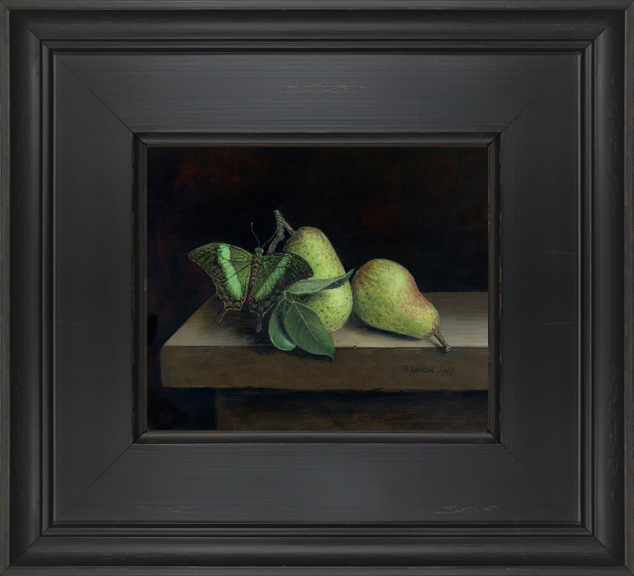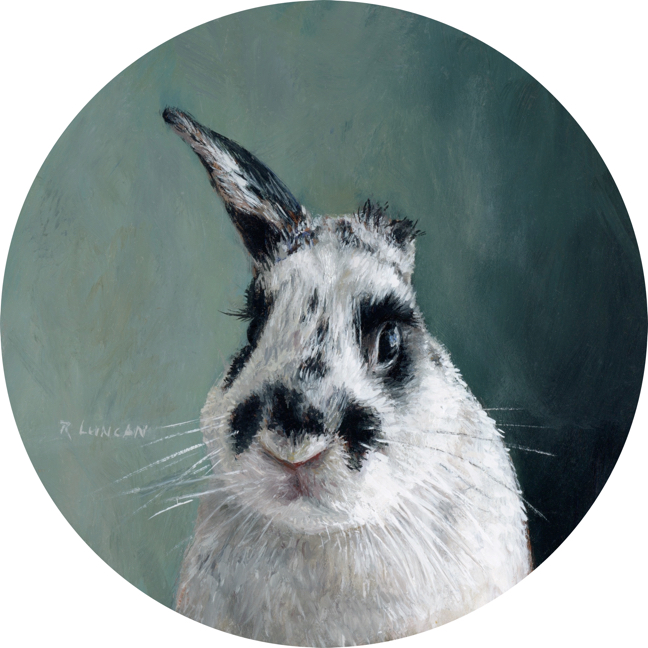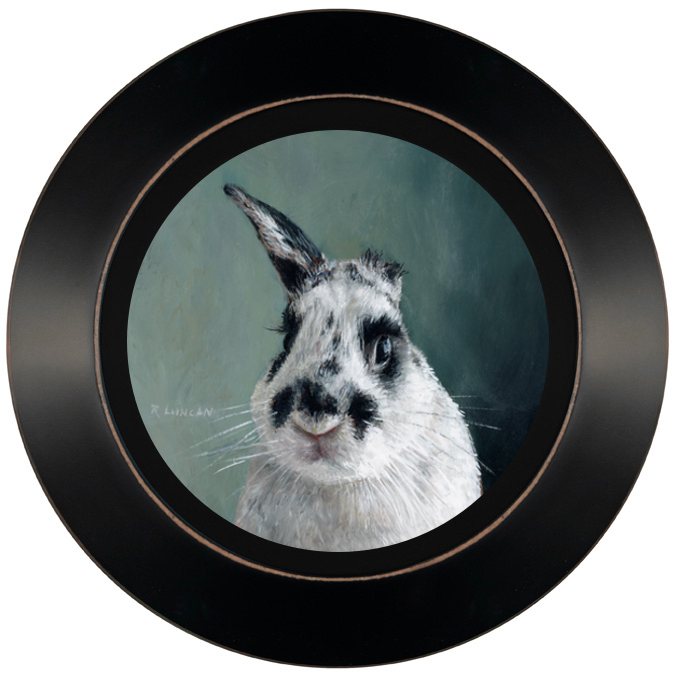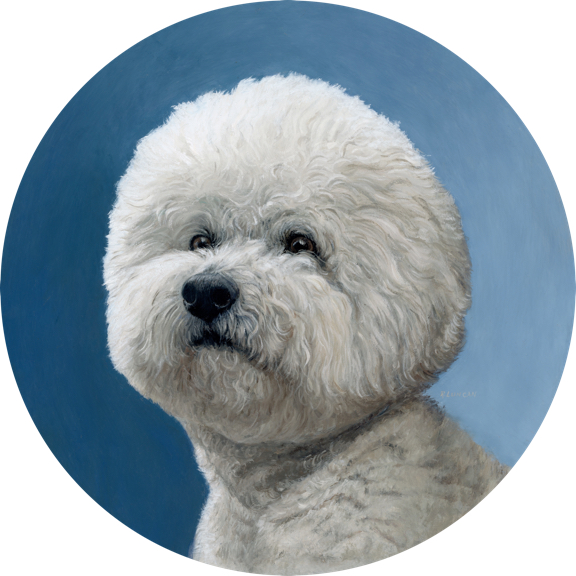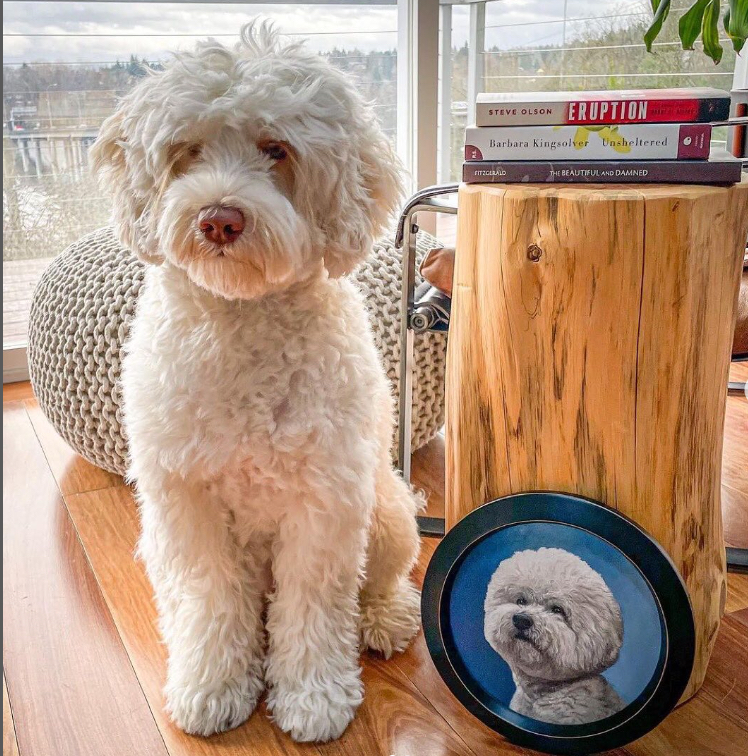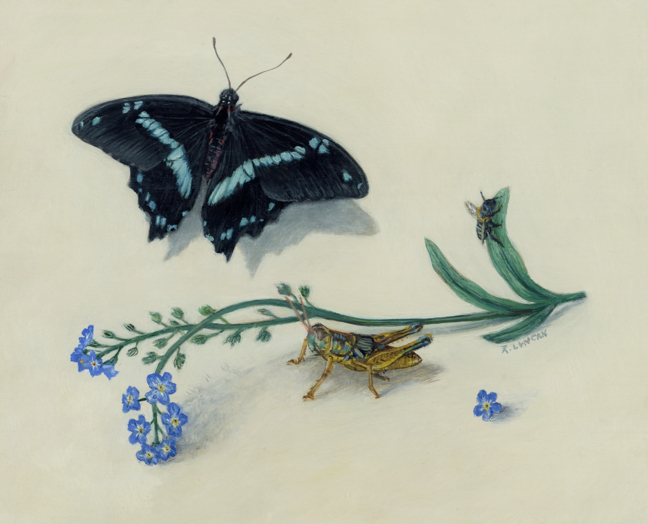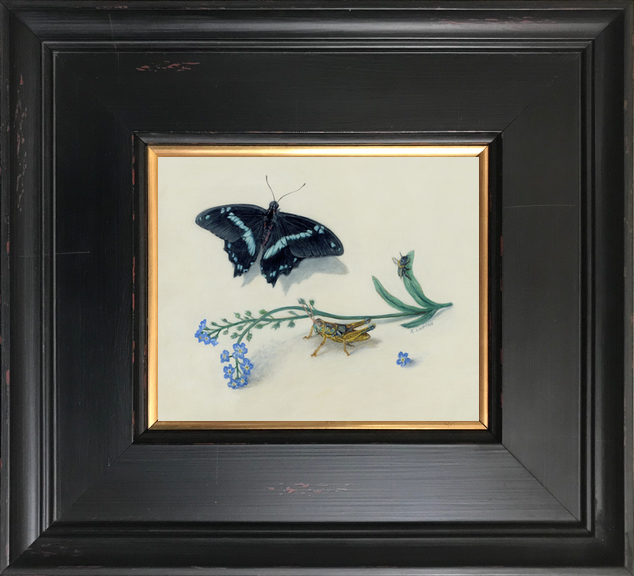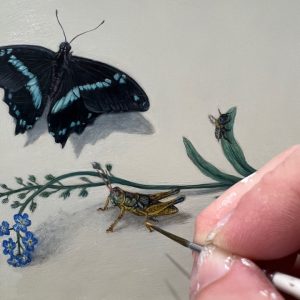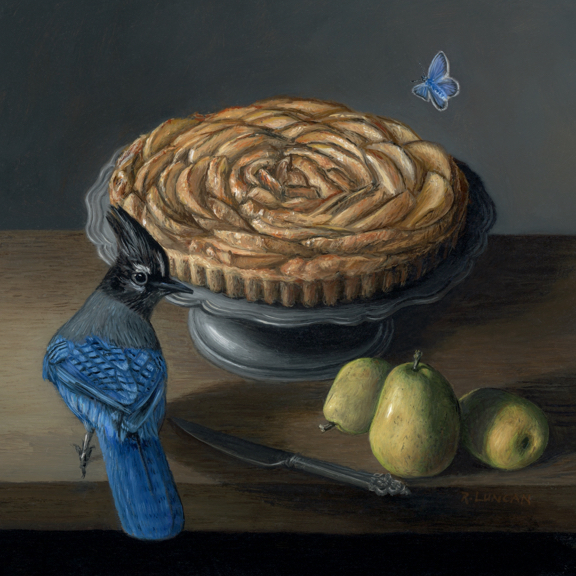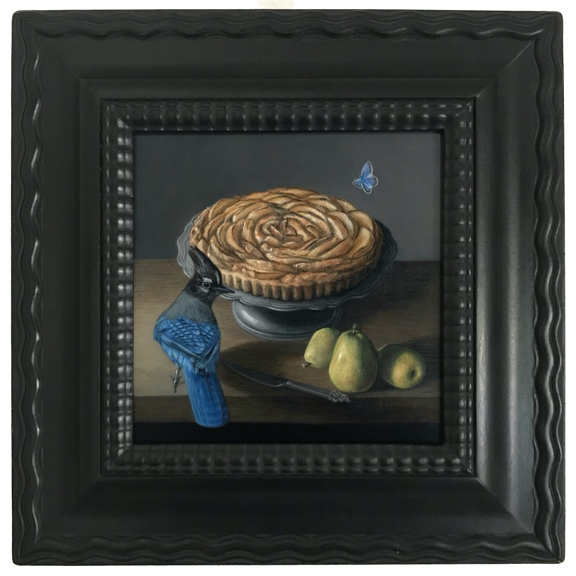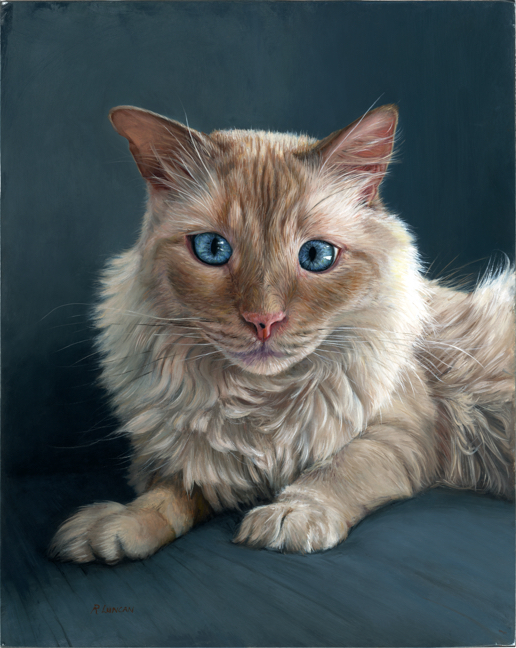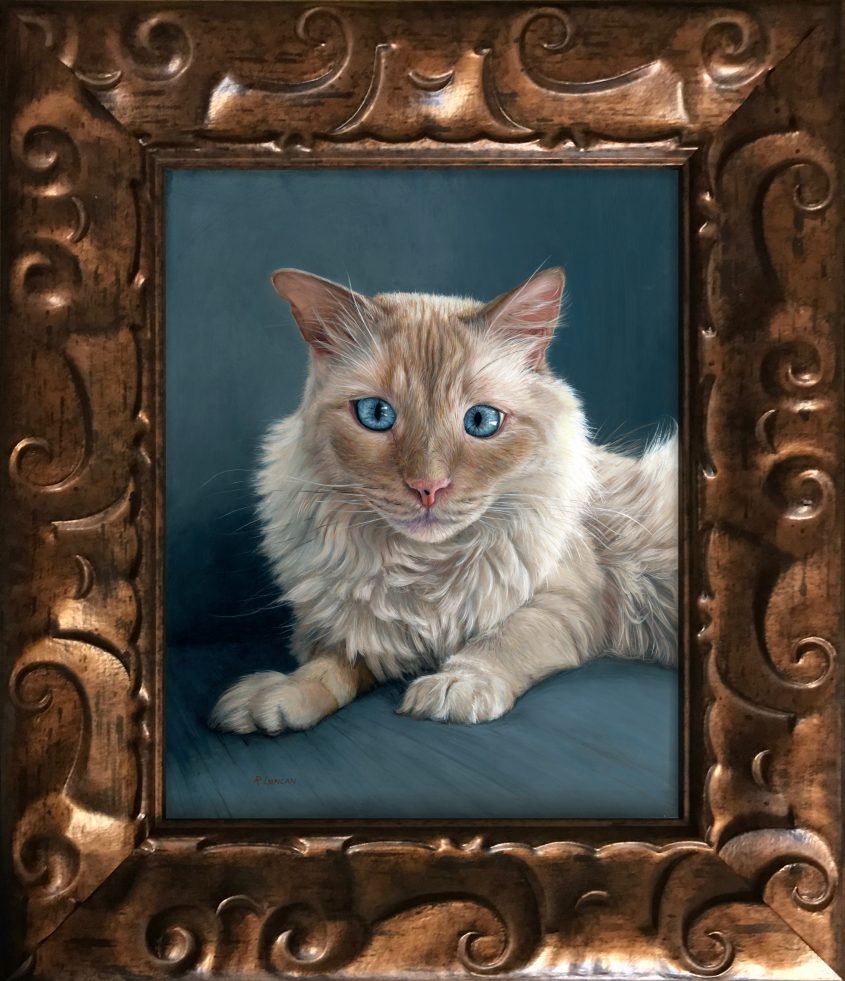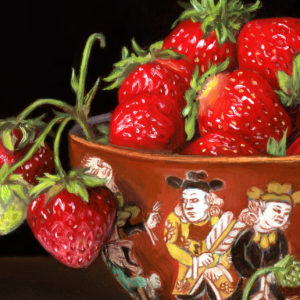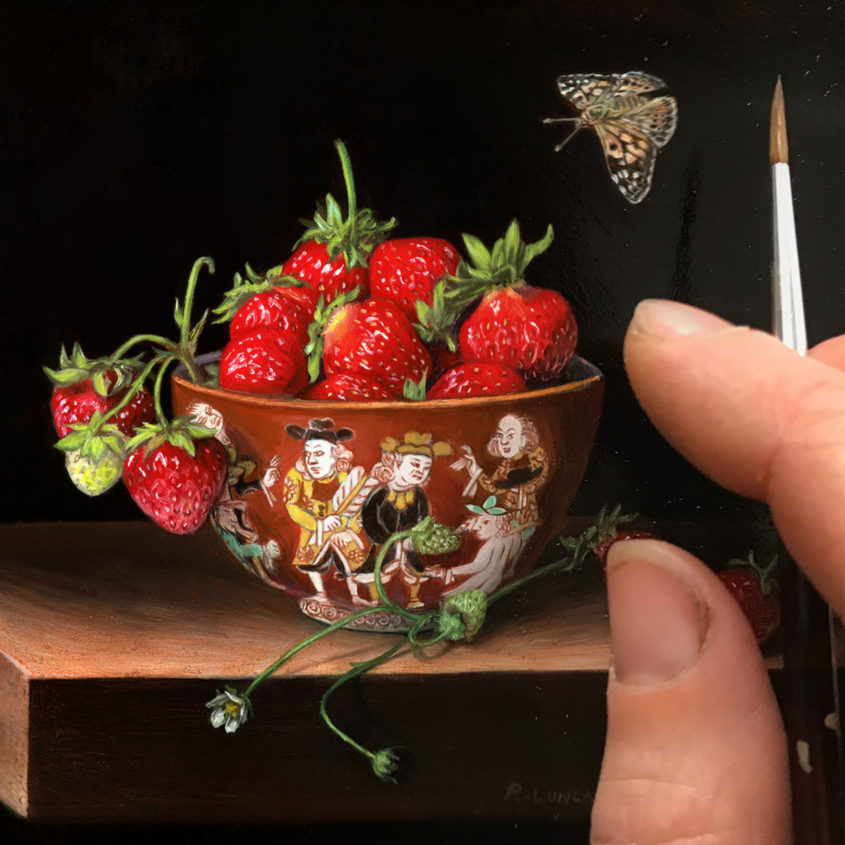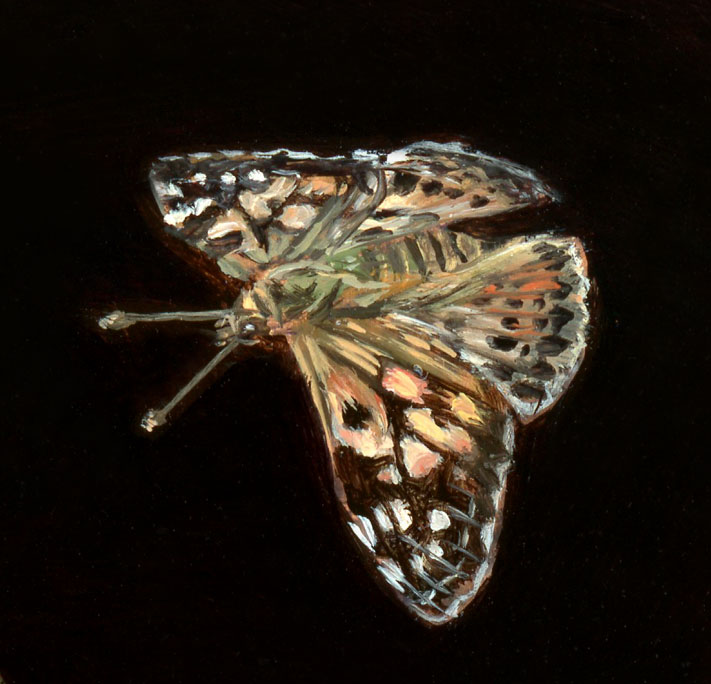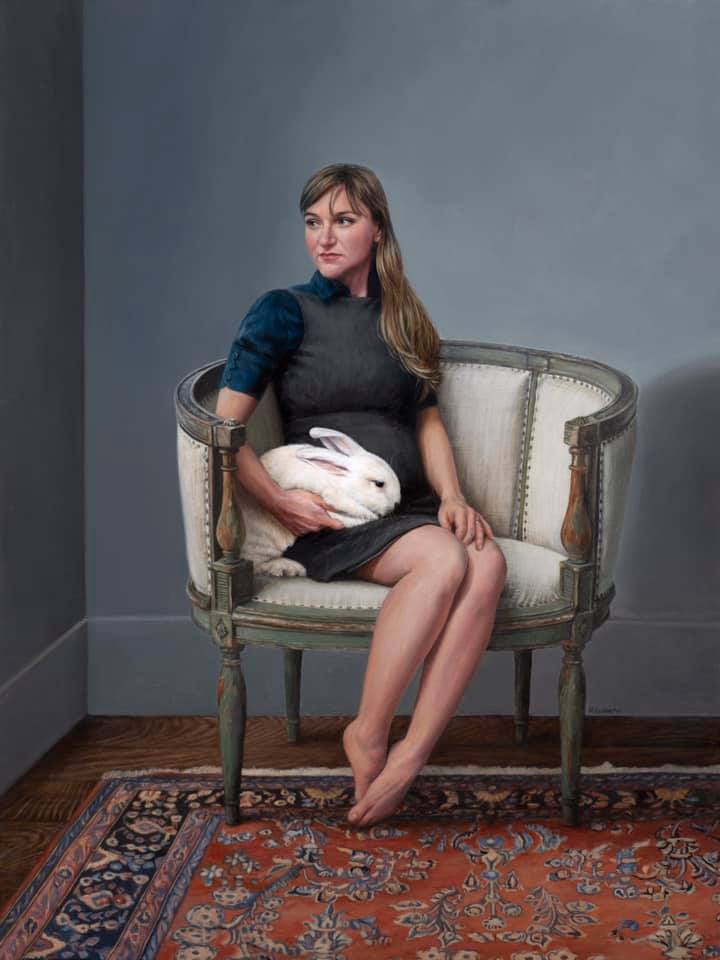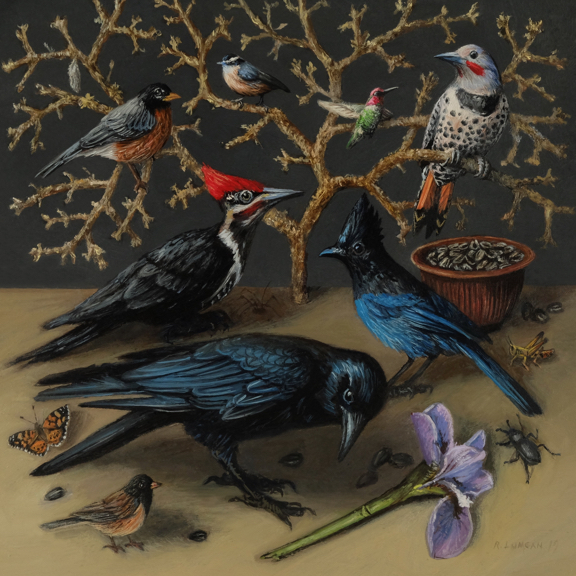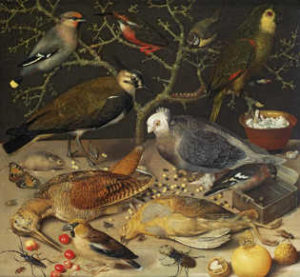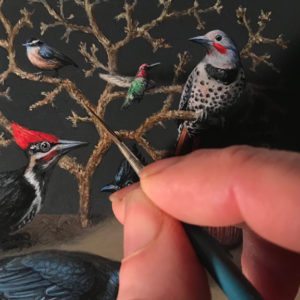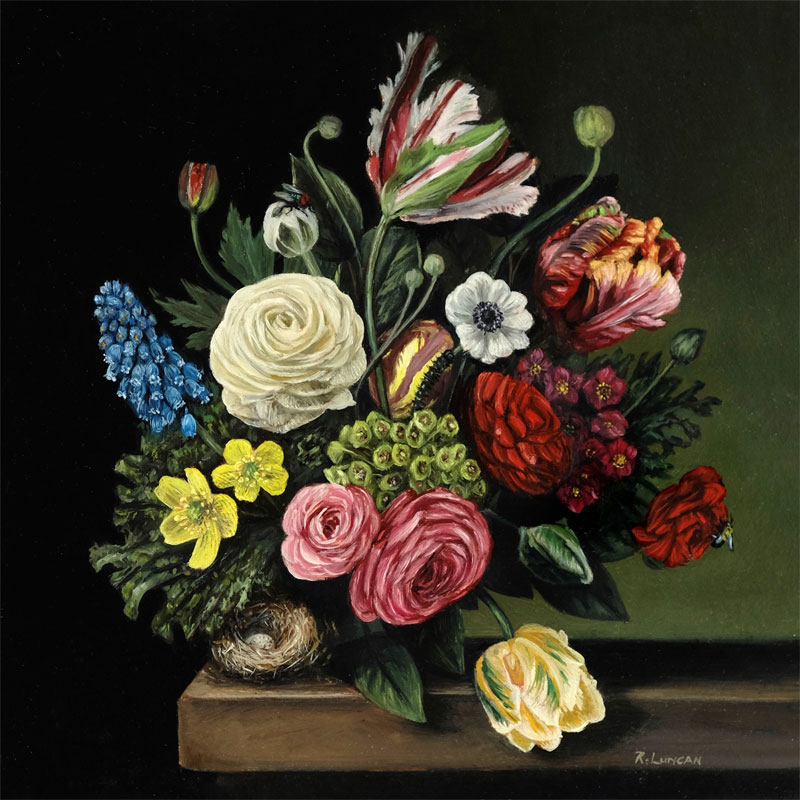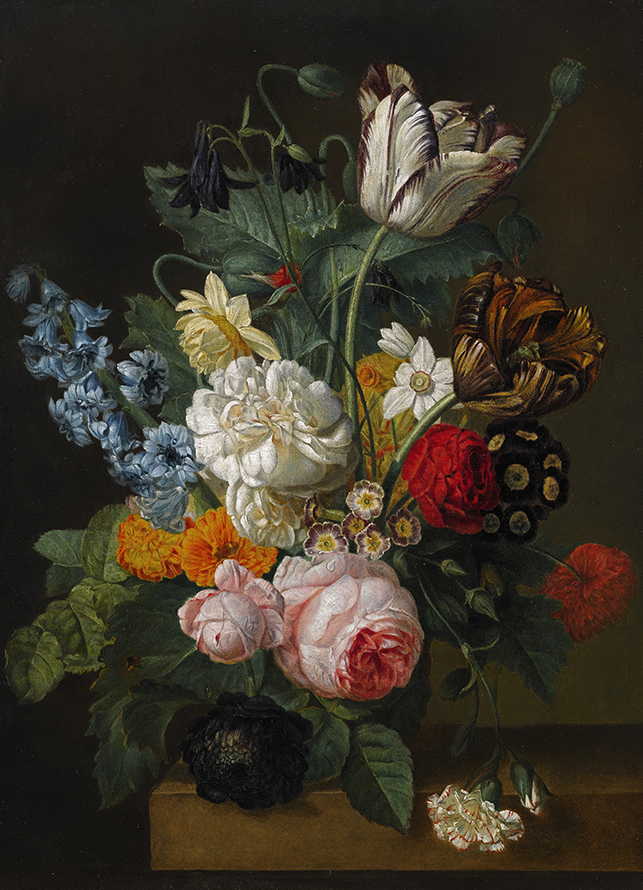This month’s monthly miniature marks the welcome return of my pear harvest—and the chance to feature one of my favorite fruits in a painting once again. For years, our tree produced more pears than we knew what to do with, sometimes into the thousands. But after several seasons of low yields, I was thrilled to gather around 200 this fall. It felt like reconnecting with an old friend.
I originally planned to paint a western tiger swallowtail I spotted on a fallen pear in the garden, but as I started working on the composition, I swapped it for an emerald swallowtail. The striking green tones of the emerald suited the palette I had in mind, allowing for a nearly monochromatic background with subtle hits of red and orange. Though the butterfly is native to Southeast Asia, but it’s a popular species in butterfly houses around the world so you may have seen them anywhere you call home.
A Shift in Mood
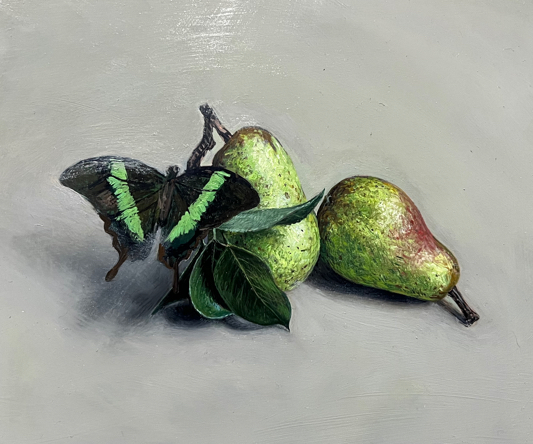
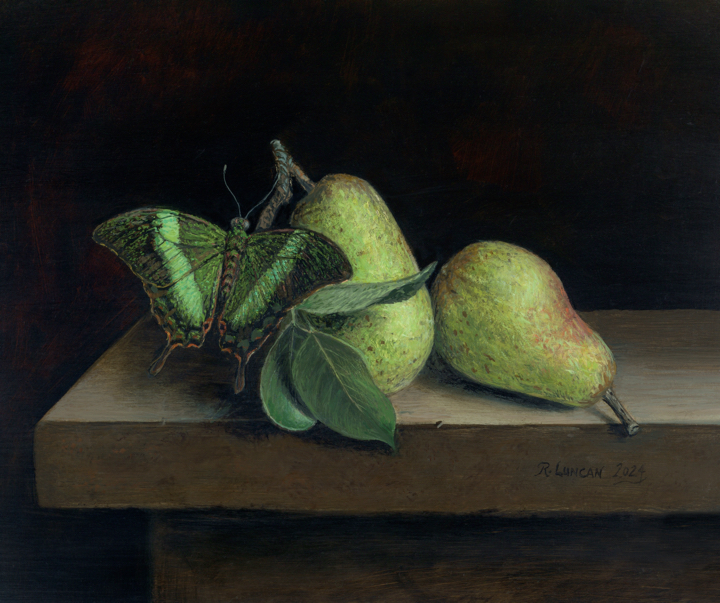
The creative process behind this piece took an unusual turn for me. I began with a pale cream background—an approach more reminiscent of the sparse still lifes of Jan van Kessel. But halfway through painting, I realized it wasn’t offering the mood I was after. So, I made a rare decision to change direction. I repainted the background dark and added a stone table inspired directly by one of Adriaen Coorte’s compositions. The result is a richer, moodier setting that feels more grounded and contemplative.
This kind of mid-course correction is rare in my practice—because my paintings are so detailed, I typically finalize the composition before I begin painting. But in this case, the shift felt essential.
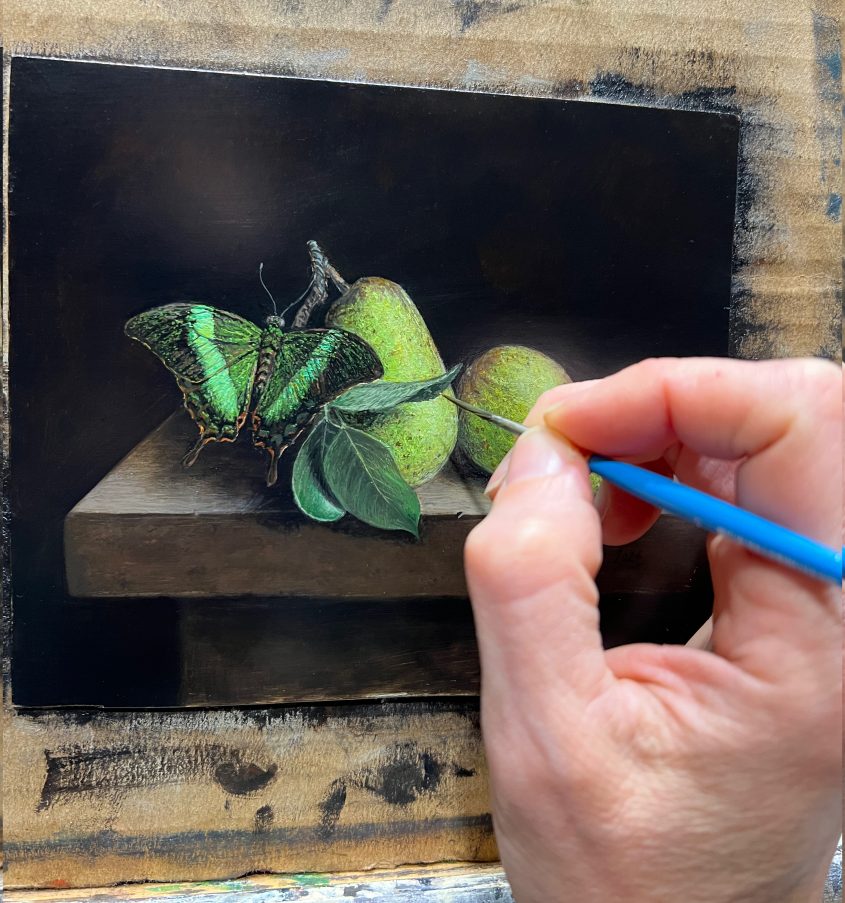
From the Studio
Getting this piece finished in time was no small feat. My youngest is starting to walk, we just wrapped up my show at Harris Harvey Gallery, and our home is in full project mode. Life feels full to the brim—but I wouldn’t have it any other way. 💚
